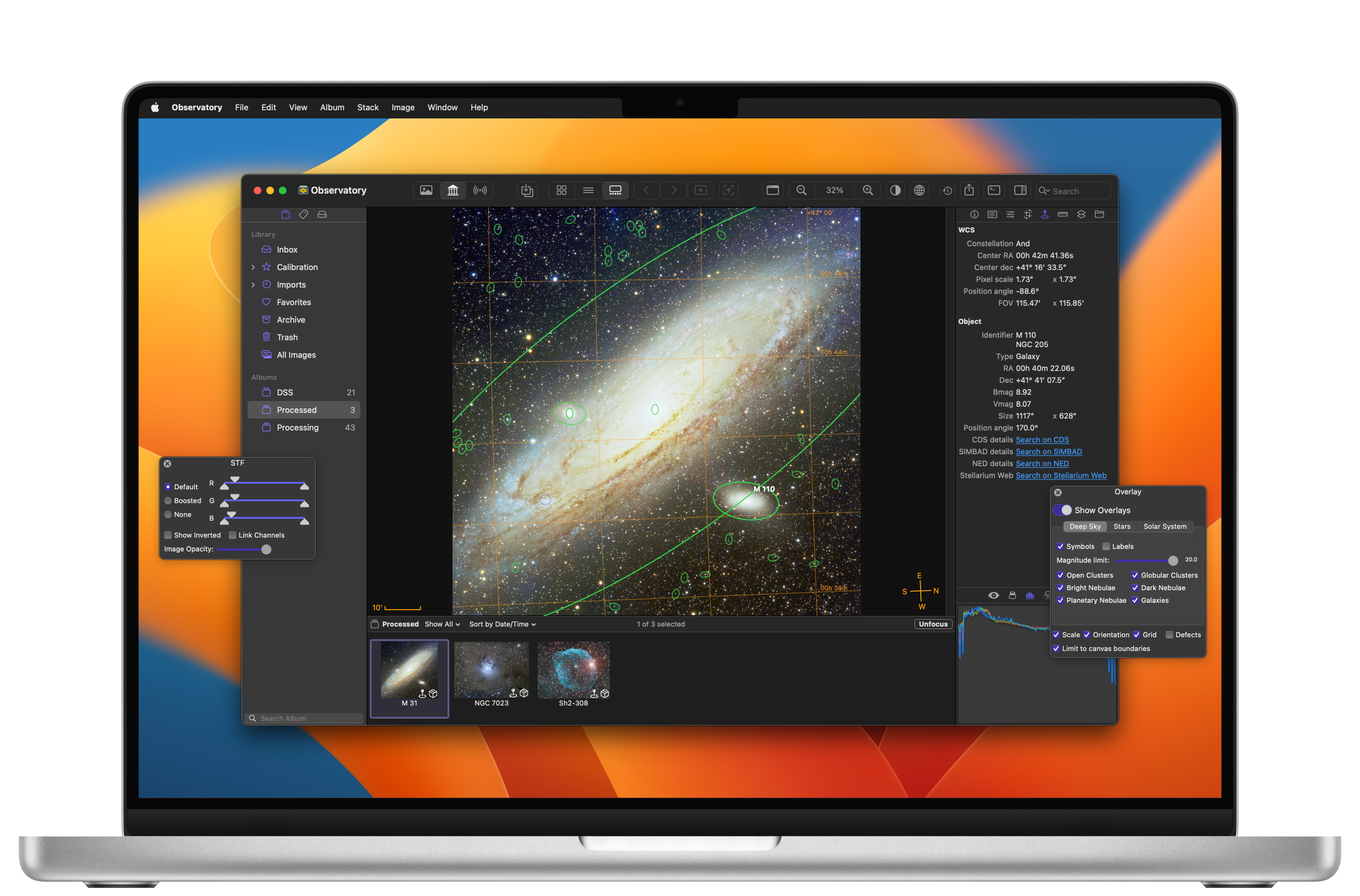
Observatory 1.0 was released on April 25, 2016, when OS X 10.11 El Capitan reigned. It has received many updates over the years, adding many new capabilities while maintaining compatibility with OS X 10.11 all the way to the upcoming macOS 14 Sonoma. Its most recent incarnation is Observatory 1.6.7, released earlier this year, and like many releases before it it runs natively on Intel and Apple silicon Macs.
Today we unleash the next major version of Observatory. It requires macOS 11 Big Sur or later. If you purchased Observatory 1.x and have a compatible system, you will automatically receive it.
A lot has changed.
Observatory’s user interface has been completely overhauled, making it more modern, powerful and much easier to use. Advanced searches can now be performed without creating a smart album, image calibration has been streamlined, and the new plate solver automatically adjusts itself to your imaging setup. Stacks are now cached, and there’s no need for creating a managed master from them to add adjustments, plate solve or use them for calibration. The orientation of images also has changed, to match other software. Importing performance has greatly improved and you can now continue using Observatory while importing or plate solving is in progress. The new rendering engine is Metal based instead of OpenCL. USNO-A2.0 and UCAC4 catalog support has been replaced by an internal Gaia catalog up to magnitude 16*.
But that’s not all. Observatory 2 has many more new features:
- Tagging and overlaying the positions of our solar system’s planets and 500,000 asteroids in images from the year 2000 onwards;
- New watched folder features for keeping your libraries in sync with the file system, automatically importing images, creating albums and stacks;
- An enhanced Quick Look extension with image metadata and for plate solved images, scale, orientation & grid overlays;
- A Tag navigator to manipulate tags and display all images with a given tag. With a tag selected, Observatory even highlights the selected object in your plate solved images and displays additional information in its new Object inspector;
- Dual monitor support: display images in a separate window or on a second monitor;
- Magnitude limits for overlays and automatic tagging;
- Display the most relevant image information in the new Overview inspector;
- Select multiple images and export them as a movie;
- Floating overlay, STF and activity panels; When dropping images onto the Observatory icon, they can now automatically be combined into a single library; Virtual Observatory adds ZTF search; there’s a new magnifier panel; and much, much more.
If you purchased Observatory 1.x before, these new features are available for a deeply discounted “Upgrade from Observatory 1” In-App purchase. If you are new to Observatory and 2.x is your first purchase, then these features are included already.
* With an optional In-App purchase the internal Gaia catalog can be extended all the way to magnitude 20. That’s more than 800 million stars in total!